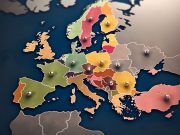Have you ever wondered what the happiest country in the world is? Many of us have, and we all want to know what it takes to be a truly content nation. Well, after extensive research and analysis, I can tell you that there is an undisputed leader when it comes to happiness: Finland. This Scandinavian superpower has been crowned as the number one happiest country in the world!
But how did this come about? What makes Finns so content with their lives compared to other countries around the globe? In this article, we will take a deep dive into these questions and more – exploring why Finland’s citizens are among the most satisfied people on earth. We’ll look at their culture, lifestyle, government policies and economic situation – discovering exactly what makes them tick. So if you’d like to learn more about why Finland is such a cheerful place to live, read on for my comprehensive report detailing just that!
Why Is Finland Number One?
When it comes to happiness, Finland is at the top of the list. This Scandinavian country was recently named as the happiest nation in the world by The World Happiness Report 2020. It’s no surprise that Finns enjoy a higher level of life satisfaction than most other countries, considering their commitment to social equality and mental health support for citizens.
The Finnish population enjoys an impressive amount of freedom, which contributes to feeling satisfied with life. The government provides its citizens with high-quality educational opportunities, healthcare services, and generous unemployment benefits, creating a sense of security among individuals. In addition to financial stability, everyone has access to free counseling services and stress management programs sponsored by national organizations such as Kela, Terveyden ja hyvinvoinnin laitos (THL), and Mielenterveyden keskusliitto (MKK).
These initiatives have resulted in improved well-being across all age groups living in Finland; children are receiving better education while adults experience lower levels of anxiety or depression due to these resources. This positive atmosphere coupled with the willingness of people act respectfully towards each other creates a welcoming environment where diversity is appreciated rather than discriminated against. With this kind of social foundation, it’s not hard to understand why so many feel content when calling Finland home. As we examine further into what makes the Finns happy, let us look into the culture and lifestyle that drives such positivity within Finnish society.
The Culture And Lifestyle Of The Finns
The Finns are known for their contentment and happiness, which has recently been confirmed when Finland was named the happiest country in the world by the World Happiness Report. Here is a glimpse into some of the cultural lifestyle factors that contribute to this joy:
- Outdoor Activities: The Finnish people have an affinity with nature, evidenced by all sorts of outdoor activities they participate in, including camping, canoeing, swimming, fishing and hiking.
- Nordic Cuisine: Traditional dishes like salmon soup, mashed potatoes and reindeer meatballs are staples of the local cuisine. For dessert there are sweet treats such as donuts filled with jam or cream cheese pastries.
- Cultural Celebrations: Throughout the year there are various festivals celebrating holidays such as Christmas and Midsummer which often involve traditional music and dances around bonfires. All these aspects combine to create a unique culture that contributes to the overall sense of wellbeing experienced by its citizens.
Government Policies That Promote Contentment
The Finns enjoy a great deal of contentment, which has been attributed to the country’s government policies. These policies have long included measures that prioritize the welfare and wellbeing of its citizens. For example, Finland is well known for having some of the highest educational standards in the world; this helps ensure that all residents can access quality learning opportunities and pursue their passions. Furthermore, mental health awareness is heavily emphasized throughout the nation, with numerous initiatives dedicated to providing support services and resources to individuals who are struggling emotionally or mentally.
Public healthcare is also widely available, allowing people from all walks of life to get medical care when needed without facing financial strain due to high payments. This further supports meaningful levels of contentment as it provides assurance that no one will be unable to receive necessary treatments merely because they cannot afford them. Additionally, generous parental leave policies allow parents – both mothers and fathers alike – to take time off work to spend more time with their children without worrying about job security or income loss.
This system of prioritizing public welfare contributes greatly towards why Finland consistently ranks higher than other countries on happiness scales year after year. With such supportive infrastructure in place, it’s easier for people to focus on enjoying life while feeling secure in knowing they are supported financially and socially by their government. Moving ahead, let’s explore how these same ideals tie into Finland’s vibrant economy…
The Economy Of Finland
A true paradise on earth, Finland is the number one happiest country in the world! With its booming economy, ageless population and unparalleled social safety net, it’s no wonder why people flock to this Nordic nation.
Age-old traditions like the sauna are still embraced by all generations of Finns young and old. This love for tradition coupled with a strong sense of culture have allowed Finland to remain at the top of many international rankings while keeping their citizens content and secure. Moreover, Finland has boasted consistently low unemployment rates since 1975 – an impressive feat that few other countries can match today.
Finland also prides itself on providing educational opportunities to children from pre-school right through university level. The Finnish education system encourages students to explore their passions without fear or judgment which further adds to their well-being as a society. In addition, generous government subsidies ensure everyone receives access to healthcare services regardless of age or financial standing. All these factors contribute immensely towards creating a safe and prosperous environment for all citizens alike – something that sets Finland apart from the rest of the world.
Other Countries Following Finland’s Lead
Finland has become an inspiration for many other countries to strive towards a happier culture. From the Netherlands and Denmark, to Norway and Sweden, governments are looking at Finnish model of self-care practices and mindful living as potential solutions to their own happiness levels. The concept is simple: by investing in citizens’ mental health, nations can create a society that values joy and well-being over material possessions.
The Dutch government have implemented several initiatives inspired by Finland’s example. They provide support for people who show signs of psychological distress, such as depression or anxiety, with specialized services that focus on prevention rather than cure. Additionally, they have established programs designed to help individuals develop healthy habits like exercising regularly and eating nutritiously.
In Sweden too, new policies aim to increase quality of life through improved access to social services and more flexible working hours. This encouraged citizens to take regular breaks throughout the day so they can recharge their batteries before returning back energized and focused on work tasks. All these efforts demonstrate a shift away from traditional models of productivity toward holistic approaches where individual wellbeing is prioritized over economic output.
Frequently Asked Questions
What Are The Top 5 Happiest Countries In The World?
When it comes to the top 5 happiest countries in the world, social media and mental health play a large role. Imagine yourself walking through lush green fields with your loved ones, or listening to the peaceful sound of waves crashing against rocks while you sit on the beach – these are just some of the ways that people experience joy in their lives. According to studies conducted by researchers around the globe, Finland is currently ranked as the number one happiest country in the world due to its high level of safety and security which creates an environment where citizens can thrive without fear. Other nations that have made it onto this list include Norway, Denmark, Iceland and The Netherlands; all of whom boast strong economic systems with low levels of corruption combined with excellent access to healthcare and education for their citizens. Each nation also has implemented various policies aimed at improving mental wellbeing within their population, such as free counselling services provided by government-funded organisations. In conclusion, despite our differences we must come together and work towards creating happier societies across all nations so everyone can enjoy life’s simple moments!
What Factors Contribute To A Country’s Happiness?
What factors contribute to a country’s happiness? Understanding the cultural differences and economic stability of countries around the world is key in determining which nation has the happiest citizens. Factors like social acceptance, healthcare access, education levels and safety from crime are all important elements that can lead to greater satisfaction in life. A thriving economy also plays an essential role in creating both short-term and long-term happiness for its people. Additionally, having access to leisure activities such as outdoor recreation or art galleries can further enhance one’s overall feeling of contentment. With these components combined, it’s no wonder why some countries consistently rank higher than others when it comes to their inhabitants’ level of joy!
How Has Finland’s Ranking Changed Over Time?
Finland’s ranking as one of the happiest countries globally has been on a steady rise in recent years, with its strong economic policies and vibrant social media presence. In fact, just last year it topped the list as the number 1 happiest country – an achievement that can be attributed to its citizens’ subconscious desire for freedom. This is evidenced by their national pride, which shines through in every aspect of their society; from their intricate economic plans to their innovative use of new technologies. It seems like Finland has really mastered the art of happiness!
How Has Finland’s Government Promoted Happiness?
Finland is often called the happiest country in the world, and its government has done a lot to promote this title. They have implemented various well-being programs that focus on creating a sense of community and helping citizens stay physically and mentally healthy. Additionally, cultural values such as equality, trustworthiness, freedom, responsibility, and respect are deeply engrained within Finnish society. The combination of these two things has created an environment where people can thrive and experience joy more easily than in other places around the world. Through their dedication to promoting happiness among citizens, Finland continues to be one of the most sought after countries for those seeking true contentment.
How Can Other Countries Learn From Finland’s Example?
Experience culture and improve mental health – these are two of the most important ways that countries can learn from Finland’s example. With engaging activities such as sauna sessions, outdoor pursuits, and art galleries to explore, Finns have long embraced their cultural heritage which has been proven to promote happiness. In addition, investing in mental health initiatives such as cognitive behavioral therapy for depression, counselling services for young people, and mindfulness programmes have enabled them to create a happier society. By looking at the success of Finland and adopting similar practices, other nations could potentially replicate this ‘happiness formula’.
Conclusion
As the number one happiest country in the world, Finland is an example of how government policies can create a culture of happiness. With its focus on work-life balance, generous social services and commitment to sustainability, it’s no wonder that Finns consistently report high levels of satisfaction with their life. While other countries may not be able to replicate all of Finland’s successes, they could certainly benefit from taking some cues from this Nordic nation’s emphasis on wellbeing. After all, when we’re happy, communities thrive – and isn’t that what we all want?




























